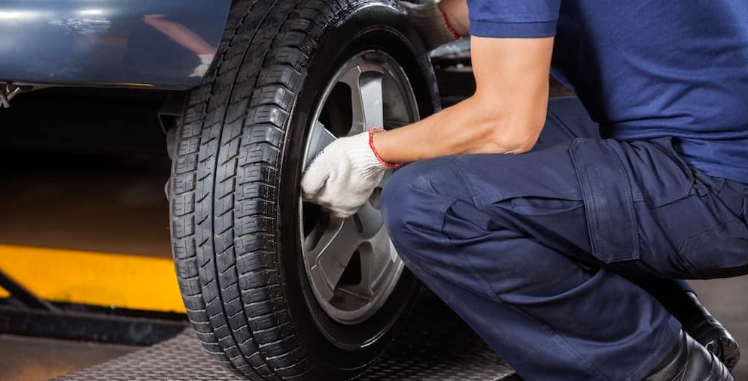Maintaining optimal vehicle performance and fuel efficiency involves various factors, with tire care playing a crucial role. Among the essential tire maintenance practices, car tire rotation stands out as a fundamental procedure that significantly impacts both vehicle performance and fuel economy. This article explores the importance of tire rotation, its benefits, and best practices to ensure your vehicle operates efficiently.
Understanding Car Tire Rotation
Car tire rotation refers to the systematic movement of tires from one position on the vehicle to another. This practice is designed to promote even tire wear by changing the location of each tire periodically. The goal is to distribute the wear patterns uniformly across all four tires, which helps maintain balanced handling and extend the lifespan of the tires.
The Impact of Tire Rotation on Vehicle Performance
- Improved Handling and Stability
Uneven tire wear can adversely affect vehicle handling and stability. When tires wear unevenly, the vehicle’s handling dynamics are compromised, leading to potential safety issues. Regular Car Tire Rotation ensures that all tires wear at the same rate, which helps maintain consistent traction and handling. This balanced wear contributes to better vehicle stability, particularly during cornering and braking, enhancing overall driving safety. - Extended Tire Lifespan
Tires are a significant investment, and premature wear can result in additional costs for replacements. Car tire rotation is a proactive measure that helps extend the lifespan of your tires. By regularly redistributing the wear, you prevent excessive wear on any single tire and maximize their usability. This not only saves money but also ensures that you get the most value out of your tire investment. - Enhanced Ride Comfort
Unevenly worn tires can lead to a rougher ride, as they may create vibrations and noise. Car tire rotation helps in minimizing these issues by ensuring that the tires wear evenly. This results in a smoother and more comfortable ride, as the tires maintain consistent contact with the road surface.
Car Tire Rotation and Fuel Efficiency
- Reduction in Rolling Resistance
Rolling resistance is the force that opposes the motion of a tire as it rolls on the surface. Uneven tire wear can increase rolling resistance, which requires more engine power to maintain speed, thereby reducing fuel efficiency. Regular car tire rotation helps in minimizing rolling resistance by promoting even tire wear. As a result, the vehicle requires less energy to move, leading to improved fuel economy. - Optimized Alignment and Balance
Tire rotation often involves checking and adjusting wheel alignment and balance. Proper alignment ensures that tires are positioned correctly relative to the vehicle’s chassis, while balanced tires reduce vibrations. Misalignment and imbalance can lead to increased rolling resistance and decreased fuel efficiency. By incorporating tire rotation into your maintenance routine, you ensure that tires remain correctly aligned and balanced, contributing to better fuel efficiency.
Best Practices for Car Tire Rotation
- Follow Manufacturer Recommendations
Vehicle manufacturers provide specific guidelines for tire rotation patterns and intervals. These recommendations are tailored to the vehicle’s design and tire specifications. It is crucial to adhere to these guidelines to ensure that the tire rotation is performed correctly and effectively. Check your vehicle’s owner’s manual or consult with a professional mechanic to determine the appropriate rotation schedule for your car. - Choose the Right Rotation Pattern
There are several tire rotation patterns, including the front-to-rear pattern, the cross pattern, and the rearward cross pattern. The choice of pattern depends on factors such as tire type, drive system, and vehicle configuration. A professional mechanic can help you select the most suitable pattern for your vehicle and tires, ensuring optimal results from each rotation. - Regular Inspections
In addition to tire rotation, regular inspections of tire condition, alignment, and balance are essential. Look for signs of uneven wear, such as bald spots or excessive tread wear on specific areas of the tires. Address any issues promptly to avoid compromising vehicle performance and safety.
Conclusion
Car tire rotation is a crucial aspect of vehicle maintenance that directly influences performance and fuel efficiency. By ensuring even tire wear, you enhance handling stability, extend tire lifespan, and improve ride comfort. Moreover, regular tire rotation helps reduce rolling resistance and optimizes alignment and balance, leading to better fuel economy. Adhering to manufacturer recommendations, choosing the right rotation pattern, and conducting regular inspections are key to maximizing the benefits of tire rotation. Incorporating these practices into your vehicle maintenance routine will contribute to a more efficient and enjoyable driving experience.















